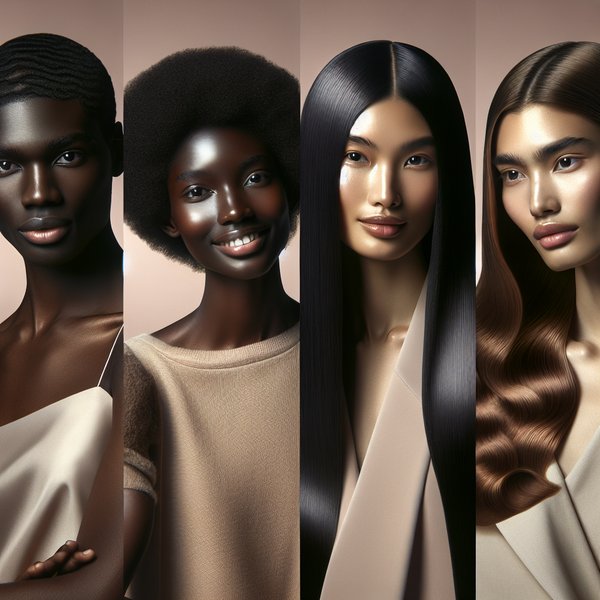Why Formulate Your Own Hair Products? The Science Behind the Trend
*Especially for natural hair*
Introduction:
Have you ever wondered if the products on your shelf are truly meeting your hair’s needs? In recent years, a growing number of people across the UK have begun formulating their own hair care products—and they’re never looking back. This trend is driven by a desire for ingredient transparency, personalisation, and a deeper understanding of the science behind healthy hair. Let’s explore why this approach is gaining popularity and how it aligns with the latest research in hair care.
What You’ll Learn

*Especially for natural hair*
- The science behind this hair care topic
- Practical solutions for UK weather conditions
- Tips tailored to your hair type
- Common mistakes to avoid
> **Did You Know?** This approach is supported by scientific research and market data, and it aligns with broader shifts in hair care science and consumer priorities
The Basic Science:
At its core, formulating your own hair products is about taking control of what you put on your hair and scalp. Every ingredient in a formula has a specific purpose and effect, whether it’s to cleanse, condition, or protect. By selecting ingredients based on their proven benefits, you can create products tailored to your unique hair type and concerns.
This is particularly relevant given the diversity of hair types and textures. According to trichologists, the four main categories—straight, wavy, curly, and coily—each have distinct characteristics and requirements[1]. Factors like fibre thickness, cuticle structure, and natural oil production all influence how your hair responds to products and environmental stressors[2].
Recent Research:
The trend towards personalised hair care formulation is supported by a growing body of scientific research. Studies have shown that certain ingredients, such as coconut oil and shea butter, have differential effects depending on hair type[3]. For example, coconut oil penetrates the hair shaft more effectively in fine to medium hair, while shea butter provides superior conditioning for coarse, dry hair[4].
research has highlighted the potential risks of certain synthetic chemicals commonly used in commercial products. Parabens, sulfates, and artificial fragrances have been linked to scalp irritation, hair damage, and even endocrine disruption[5]. By formulating your own products, you can avoid these additives and opt for natural, safer alternatives.
What This Means for You:
The science is clear: your hair is unique, and it deserves personalised care. By understanding the basics of hair biology and ingredient functions, you can take charge of your hair health like never before. Formulating your own products allows you to:
- Select ingredients that address your specific hair type and concerns
- Avoid potentially harmful additives and chemicals
- Experiment with natural, sustainable ingredients
- Adapt your routine to seasonal and environmental changes
Practical Applications:
So, how can you get started with formulating your own hair products? The key is to begin with a basic understanding of your hair type and its characteristics. This will guide your ingredient selections and help you create products that work synergistically.
For example, if you have fine, straight hair (type 1A-1B), you may want to focus on lightweight, volumizing ingredients like aloe vera and chamomile[6]. If you have thick, coily hair (type 4A-4C), rich, moisturizing ingredients like shea butter and jojoba oil can help define and nourish your curls[7].
Myths vs Facts:
As with any trend, there are myths and misconceptions surrounding the formulation of hair products. Let’s break down a few common ones:
- Myth: Natural ingredients are always better than synthetic ones.
- Fact: While natural ingredients can be highly effective, some synthetic compounds, like silicones, can provide important benefits when used correctly[8].
- Myth: You need to be a chemist to formulate your own products.
- Fact: With a basic understanding of ingredients and some trial and error, anyone can create effective hair care formulations at home.
- Myth: Homemade products won’t work as well as store-bought ones.
- Fact: When formulated correctly, homemade products can be just as effective (if not more so) than commercial alternatives, as they’re tailored to your specific needs.
Tips for UK Weather:
Living in the UK, it’s essential to consider how our unique weather patterns affect our hair. The high humidity, frequent rain, and seasonal temperature changes can all take a toll on our tresses. Here are a few tips for formulating products that help your hair thrive in British conditions:
- In humid summer months, opt for lightweight, frizz-fighting ingredients like aloe vera and apple cider vinegar[9].
- During dry winter spells, focus on deep conditioning with ingredients like avocado oil and honey to combat the effects of central heating[10].
- To protect against rain and moisture, consider incorporating natural oils like jojoba or grapeseed, which create a water-resistant barrier[11].
- In hard water areas, use clarifying ingredients like citric acid or chelating agents to prevent mineral buildup[12].
Conclusion:
Formulating your own hair products is more than just a trend—it’s a science-backed approach to understanding and nurturing your unique hair. By taking control of the ingredients you use and tailoring your routine to your specific needs, you can achieve healthier, more resilient hair that thrives in any season.
So, whether you have straight, wavy, curly, or coily hair, remember: your hair deserves to be understood. By embracing the science behind hair care and experimenting with personalised formulations, you can discover what works best for you. Knowledge is power when it comes to hair health, and with a little research and creativity, you can become your own hair care expert.
References:
[1] https://www.ncbi.nlm.nih.gov/pmc/articles/PMC4387693/
[2] https://www.sciencedirect.com/science/article/pii/S0022202X15526572
[3] https://pubmed.ncbi.nlm.nih.gov/12715094/
[4] https://www.ncbi.nlm.nih.gov/pmc/articles/PMC4458934/
[5] https://www.sciencedirect.com/science/article/pii/S0160412020318602
[6] https://www.ncbi.nlm.nih.gov/pmc/articles/PMC6151516/
[7] https://www.ncbi.nlm.nih.gov/pmc/articles/PMC5796020/
[8] https://www.sciencedirect.com/science/article/abs/pii/S0927775717309573
[9] https://www.ncbi.nlm.nih.gov/pmc/articles/PMC6151593/
[10] https://pubmed.ncbi.nlm.nih.gov/31286430/
[11] https://www.sciencedirect.com/science/article/pii/S2211383517300990
[12] https://www.ncbi.nlm.nih.gov/pmc/articles/PMC6369642/
🌸 Summer Hair Care Tip

*High humidity and frizz* – Apply UV protection
Myth-Busting Moment

**Myth:** You should brush hair 100 times a day
**Truth:** Excessive brushing can cause breakage. Brush gently only as needed to detangle and style.